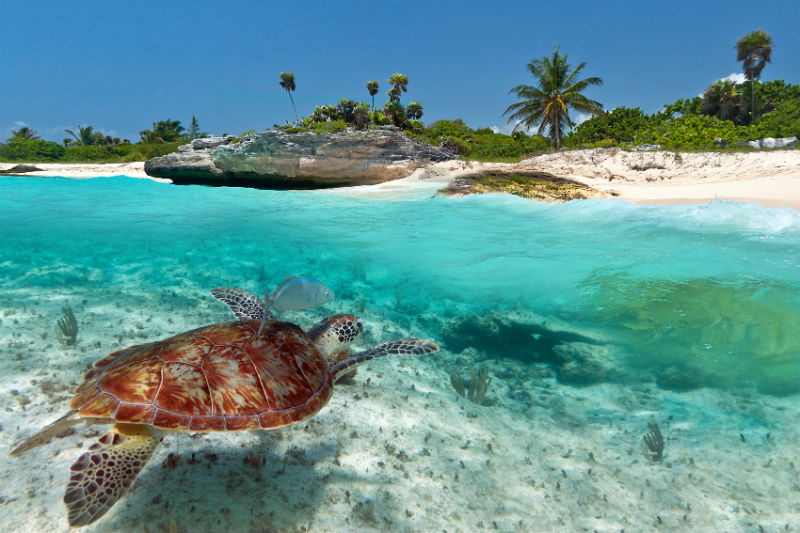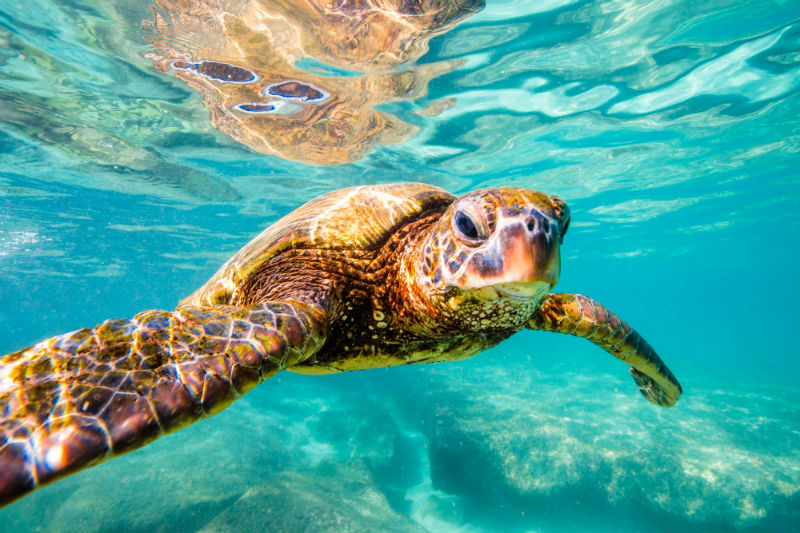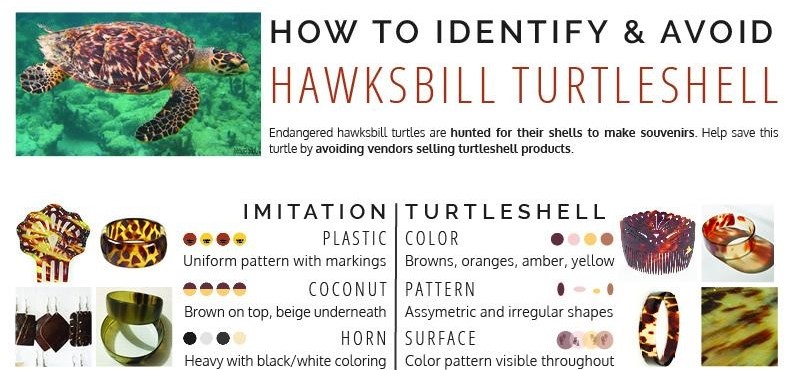It’s no big secret that tourism can have negative impacts on the environment. Despite sea turtle conservation volunteer efforts receiving negative press and tourists being the number one consumer of turtle shell products, we are on a mission to empower tourists to become ethical travelers.

We touched base with Brad Nahill, Founder of the Too Rare To Wear Campaign, to find out how travelers can be a positive force for sea turtle conservation around the world.
Why do we need to protect sea turtles, anyway?
Sea turtles play a vital role in ocean ecosystems, have significant cultural value, and are economically important to many communities in rural and developing regions.
Through their specialized diets, sea turtles help to maintain balanced ocean ecosystems. Hawksbills eat sea sponges that compete with coral and also help to keep jellyfish populations in check. Without sea turtles, coral systems can be degraded, reducing biodiversity and placing stress on the myriad of ocean species that rely on coral to survive! Sea turtle eggs are also an important food source in terrestrial ecosystems.
It is the belief of many indigenous peoples that their ancestors are reincarnated as sea turtles, further promoting the intrinsic value of these special creatures. Local people often depend on sea turtles for their livelihoods. Sea turtle tourism is a driver of economic development in many regions of Latin America and the Caribbean.
How you can support sea turtle conservation?
We know sea turtles need to be protected, but how can you play an active role in their conservation? Here are three things you can do to protect sea turtles next time you travel:
1) Combat the sale of sea turtle products
Anywhere there is coral, there are sea turtles and the risk of sea turtle products being sold. Turtle-shell products can be found all across Latin America and the Caribbean, but travelers should be on high alert in Nicaragua, Cuba, Honduras, Grenada, and El Salvador.
Turtle-shell products are sold in souvenir shops, and recognizing them is the first step to combatting their sale!
These products – often called “tortoise-shell” – take the shape of combs, bracelets, sunglasses, and other kinds of jewelry and decorative ornaments. They are made from the shell of beautiful Hawksbill turtles for the intricate brown, orange, and yellow pattern they wear.
Sea turtle eggs are offered for sale at some bars as a raw shooter, which is believed to be an aphrodisiac. Although it is not common, sea turtle meat can also sometimes be found on menus in rural areas.
Hawksbill turtles are listed as critically endangered and in decline by the IUCN Red List. It is up to travelers to play an active role in changing the demand for these products.
In order to help combat the sale of sea turtle products, you should:
- Never purchase sea turtle products from vendors.
- Only purchase souvenirs from vendors that do not sell sea turtle products.
- Politely let vendors know that you will not purchase goods from them if they sell turtle shell products.
If you are not sure if products are real turtle shell, just ask! Most vendors will tell you if their products are authentic turtle-shell.
2) Donate your time as a sea turtle conservation volunteer
The most effective way to work as a sea turtle volunteer is to find ethical and well-run organizations with a long-standing commitment to sustainability and proof of impact.
Organizations you should volunteer with are:
- Well established and work with reputable partners
- Independent organizations devoted to conservation, not tourism
- Organizations with relevant permits and accreditations
- Locally owned and operated
Some red flags for poorly operated sea turtle conservation programs can include:
- Organizations that farm turtles and have tourists assist with this effort
- Inappropriate handling of turtles, such as handling without gloves or supervision
- Hatchling programs that do not release turtles under safe conditions
3) Be respectful of turtle nests on tourist beaches

Beaches that you visit on vacation may also be nesting places for sea turtles. Turtle hatchlings have low survival rates, so it is imperative that travelers do their best not to disturb fragile nesting sites!
Follow these suggestions to ensure that you don’t harm sea turtle nests or hatchlings while you’re on the beach:
- Pack all beach furniture away overnight.
- Walk carefully, and close to the water’s edge at night to avoid hatchlings.
- Let a local organization know if you spot hatchlings.
- Do not use bright lights or make loud noises on the beach at night.
- Do not help hatchlings to the water.
Studies have shown that hatchlings need to make the trek to the water themselves to remember how to return to the nesting sites they will use again as adults. One of the best ways to protect hatchlings is to leave them alone!
If you are swimming with sea turtles, remember to keep a safe distance (20 feet) and limit your viewing time to 30 minutes to avoid causing stress or injury to the turtles.
In a turtle-shell
Next time you are traveling to Latin America, the Caribbean, Asia, or anywhere with sea turtles, you can take steps to actively promote their conservation!

As a tourist, never buy sea turtle products, and let local vendors know you will only make purchases from turtle-friendly businesses. As a sea turtle conservation volunteer, do your homework and select ethical, sustainability-minded organizations that focus on conservation. Finally, when visiting beaches that double as nesting spots, be cautious of hatchlings making their way to the sea, and never pick up or handle baby sea turtles.
One of the easiest ways to ensure you are not contributing to the problem is to get educated and stay informed before you travel. Stay up-to-date on the latest sea turtle conservation efforts by visiting the Sea Turtle Conservancy and the Turtle Island Restoration Network websites.
For those of you who want to make a positive impact for sea turtles now, take the Too Rare To Wear Pledge, and share the campaign on social media to educate other travelers!
You can learn more about Too Rare To Wear on Facebook, Twitter, and online.
Elevate Destinations is proud to work in conjunction with sea turtle conservation leaders. We thank Brad Nahill for his contribution to sea turtle conservation, for establishing the Too Rare To Wear campaign, and for providing us with the information in this article to educate and empower travelers to promote a long future for sea turtles in Latin America, the Caribbean, and beyond.

